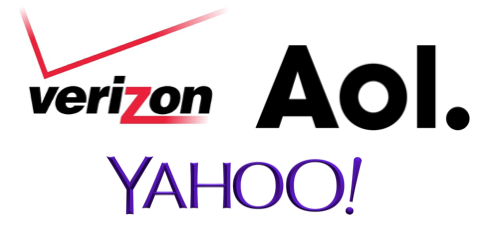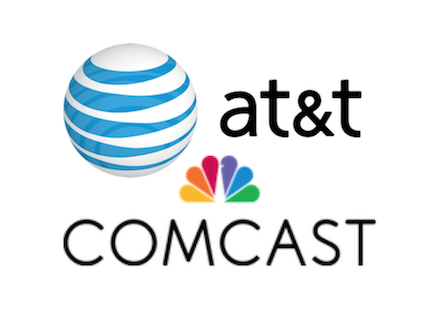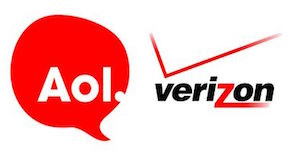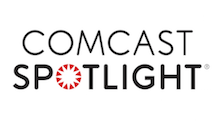Newsroom
Program Areas
-
Yahoo has unprecedented resolution into cross-device information, by combining our view of logged in users from multiple devices with app data inferred from Flurry analytics, search and geolocation data from logged-in mobile devices, and third-party data. Verified devices give us high accuracy, while inferred devices gives us scale. And when we use the verified model to train the inferred model, we are able to create a broad device model that improves overall accuracy, which we call the Yahoo Device Graph. This is built on profiles of over one billion user accounts across Yahoo properties, the hundreds of thousands of registered apps on the Flurry network, and third-party data sources. Through the device graph, Yahoo has more than 650 million users mapped to more than one device (as of Q1 2016), and is in the unique position to break a hole in the garden wall, and build a gate to the outside world. Cross-device technology provides the ability to target a customer with reliable accuracy across all their devices, shares insights into your customer’s true conversion path, and allows you to manage ad exposure to keep impact high while minimizing waste. We covered the topic well in our recent e-book, Finding Success in a Cross-Device World (link is external). Many of our clients are already putting this targeting into practice. Here are some pointers from the clients who are doing it right: Expand Your Audience Criteria Start by minimizing the constraints you place on your target audience criteria. That way, you can maximize the unique insights you’ll find out of each channel. Every device and media channel has an innate set of users who will react differently to your product and message, and opening your targeting parameters will provide better data on those differences among users. Cross-device targeting will give you the insight to tease out those differences, so long as your initial audience isn’t too limited. As far as you can allow, let your data tell you how an android user reacts compared to an iPhone user, or a desktop video user versus a mobile video user. Plan to Shift Budgets Plan your budget around a goal and an intended audience, and don’t let your budget get siloed. In a traditional online buy, a client or agency divides their buying teams and spends by channel. In the world of platform buying with cross-device targeting, this kind of division can limit your performance and insights. It’s a chicken and egg problem – we never budgeted by audiences across devices because we couldn’t find the same person on different devices. Now that we can, the way we separate out budgets needs to focus back on the intended user and not on the channel. Cross-device targeting gives you the unique ability to look at your person as a whole person through all their devices. To capture the full benefits of your plan, your teams and budgets have to be fluid enough to follow your customers wherever they will be. Leverage Different Creatives Cross-device targeting will finally give you a level playing field for evaluating your creative equally across devices, for better or worse. On one hand, you finally have a method to ensure you are talking to the same person on all their devices, on the other hand, banner blindness and ad burnout is going to happen much quicker if you duplicate your creative (TV ads as online ads, display ads shrunk down to be mobile ads). Different devices offer unique opportunities to custom-tailor experiences. Consider the unique creative opportunities that come from multiple channels, and plan your campaign accordingly. User Experience Comes First Make sure your users love every moment of their experience on your sites and with your creatives. Positive user experiences often have a stronger impact than the best cross-device targeting in the world, so make sure you’re working with both. Is your mobile site and app experience engaging, simple, and intuitive? Or is it difficult for a customer to move through your buying funnel? A great targeting and creative plan can fall flat on a bad site or app experience. Like the creative issues described above, a well-designed user experience will also show up in your analytics as people flow through the process and convert to loyal customers. Be Adaptable Expect to be surprised by the cross-device conversion data, and be ready to adapt. You’ve already done a great job improving your creative, site, and targeting and you have released your campaign into the wild. The data might push you to make changes, along with a wide variety of factors. A brokerage advertiser may be at the mercy of the stock market, and have to speed up new customer spending during volatile times. Auto shoppers may always be better targeted on their mobile devices while they are on a competitor’s lot than in front of their computers. Cross-device targeting can give you the comfort that you are making decisions based on analytics, looking at the most complete picture of your customers. --- For more information, visit http://bit.ly/2aJfWWp (link is external)
-
Blog
DataLab USA Data Sourcing & Addressable TV
Better data equals better results Household level targeted TV advertising
Data Sourcing: DataLab’s two data affiliate companies are authorized resellers of both credit and demographic data from the nation’s leading data suppliers. The credit data maintained at DataLab include full agent copies from all 3 bureaus, each with thousands of attributes, weekly transactional files tracking credit changes across hundreds of attributes, daily inquiry triggers, and a multitude of property and auto x-date fields. Furthermore, DataLab installs, processes, and maintains national files from over a dozen leading national and specialty demographic data providers. DataLab processes approximately 2.5 trillion name-attribute combinations every month, or more than 11,000 attributes for more than 220 million U.S. consumers across its more than 20 files. All of these assets are installed onsite at DataLab, are accessible in a production environment, and are available uniquely to DataLab’s clients. DATA SOURCING DATA PROCESSING ANALYTICS DATA WAREHOUSING Addressable TV: What is it? Addressable TV is displaying TV ads using household-level analytical profiling and segmentation. How does is it work? Addressable subscribers have a set top box with a unique identifier. The box utilizes software that allows the network provider to serve custom ads to that household. DataLab scores prospects using your CRM data and matches it to the subscriber files. This is how target households are selected. The ads are exposed to the target households. After the campaign is complete, results can be measured by matching exposed households with response data and control groups. See how powerful addressable TV can be by checking our addressable TV case study (link is external). How do I get started? DataLab offers addressable TV data prep and analytics services which help your brand target the best prospects available. DataLab will provide a direct introduction to the satellite and cable providers so you can traffic your ads. Through our partnerships with Comcast, Dish, DirecTV and Cablevision you can get your ads to over 55 million households. Will it work for me? Contact us today for a free match of your CRM or prospect records to our addressable TV universe. HIGHLY TARGETABLE Targets customers on a household level HIGHLY MEASURABLE Contrasts treated vs control groups CUSTOMIZED MESSAGES Displays relevant ads TRANSPARENCY AND CONTROL Wastes less media dollars ---- For more information visit http://datalabusa.com/data-sourcing/ (link is external) and http://datalabusa.com/portfolio/addressable-tv/ (link is external) -
The BrightRoll DSP puts the power of programmatic in your hands, giving you access to inventory across all major ad exchanges, SSPs, and publishers. Exclusive Yahoo DataGain exceptional audience insights with exclusive access to Yahoo Audience Data Cross-Channel TargetingReach viewers across devices through video, display, and native ads Full TransparencyKnow and control exactly where your creative appears, down to individual URLs Advanced Audience Targeting Get exclusive access to Yahoo data sources like mobile analytics, email, user registration, search, Yahoo apps, and content consumption. Yahoo’s platforms draw over 1 billionusers every month; users who perform over 165 billion activities every day from 2.7 billion devices. With our Audience Builder and that kind of data in your toolkit, you can use deep—and sometimes surprising—insights to build your audiences easily. Streamlined Campaign Management Precise targeting is key when running programmatic campaigns, and we empower you to target audiences by location, device type, time of day, and dozens of other parameters. But what’s targeting without measurement? Measure the results of your campaigns with third-party integrations with comScore, Nielsen, and Moat, and ensure that your creatives are seen by real viewers with Integral Ad Science and DoubleVerify. Our reporting dashboard gives you results in real time, with full transparency into every campaign parameter, and our technology will automatically optimize campaigns for peak performance. --- For more information visit https://brightroll.com/dsp (link is external)
-
Blog
DoJ and FCC Regulators Must Scrutinize Verizon/Yahoo deal
Need 21st Century Safeguards for Big-Data-driven digital media mergers
Statement of Jeff Chester, CDD executive director: Regulators, including the DOJ and FCC, must prevent Verizon from taking anticompetitive and unfair advantage of its broadband ISP bird’s nest view of what their subscribers and consumers do—online and off. The proposed takeover of Yahoo’s core digital data advertising business, when combined with the capability to gather information from its wireless devices, broadband networks, and set-top boxes, gives it control over the key screens that Americans use today. Verizon has already supercharged its use of “Big Data” tactics to monitor their customers and online users, including through its recent shopping spree that includes AOL and Millennial Media (and also enables it to manage part of Microsoft Advertising’s consumer data targeting operations). Verizon’s ability to track a single person across their devices, when they are in a store, at home, work or school, and connect the digital dots to know whether they are now on their mobile phone or home watching TV, is a threat to the privacy of Americans. Regulators should closely scrutinize the Yahoo dea to prevent anticompetitive practices related to Verizon’s ability to leverage its mobile and geo-location consumer data. The FCC should also impose strict safeguards that prevent Verizon from combining Yahoo data with what it already knows about its customers and consumers. The FCC should also quickly enact its proposed consumer privacy rules for broadband ISPs. As broadband network monopolies such as Verizon merge online ad giants, new threats to consumer privacy emerge. That’s why action of FCC Chairman Wheeler’s privacy proposal is required. The Obama Administration and the FCC must ensure that deals like Verizon/Yahoo don’t further erode the little privacy Americans enjoy today when they use digital media. **** For background on Verizon’s use of data, see the section in our recent report: https://www.democraticmedia.org/article/big-data-watching-growing-digita... also, to see Verizon’s recent growing capabilities to use our geo-location and app data, note from Millennial Media 10 k 2015 (that company now owned by Verizon) My bold: Our robust data management platform, or DMP, allows us to access, analyze and utilize the large volumes of data we possess. This data includes location, social, interest, and contextual data, as well as the insights we derive from measuring campaign effectiveness—providing a unique, multidimensional profile of individual consumers. To date, we have developed more than 700 million active server‑side unique user profiles, over 60 million of which link multiple mobile devices and PCs to a single specific user on an anonymous basis. These user profiles, combined with third party data from our data partners, enable us to deliver more relevant, engaging and effective advertising to our advertising clients. Our data asset also allows us to measure the impact of mobile advertising on consumer engagement, intent and action. We have developed a suite of solutions which measures several different areas of mobile advertising impact. As of December 31, 2014, our platform reached more than 650 million monthly unique users worldwide, including over 175 million monthly unique users in the United States alone. Approximately 60,000 apps and mobile sites are enabled by their developers to receive ads delivered through our platform, and we can deliver ads on over 9,000 different mobile device types and models. While averaging more than three billion ad requests daily throughout 2014, in the last two months of 2014, our platform typically handled over nine billion ad requests daily, including requests received through our supply side tool, and requests received through third party platforms and processed by our programmatic buying tool. -
With a one-stop, cross-screen marketing partner. That's how. The retail shopper's path to purchase includes multiple screens. Take a look at the following pictorgraph for a better understanding of the targeted path to purchase. --- For more information, visit http://www.twcmedia.com (link is external)
-
Ensighten Activate Data Distribution with LiveRamp Distribute audience segments from Ensighten Activate to 100+ marketing applications and networks The Problem: Brands are unable to use omni-channel first-party data to improve marketing performance. The Solution: Collect omni-channel data in Ensighten Activate and distribute first-party audience segments through LiveRamp to DMPs, DSPs, personalization platforms, and measurement platforms. DATA OWNERSHIP AND DISTRIBUTION Ensighten Activate collects omni-channel data and allows you to create first-party audience segments. Ensighten Activate first-party based audience segments are sent to LiveRamp for distribution. LiveRamp delivers your Activate audience segments to the destination platforms of your choice. USE CASES AND BENEFITS Omni-channel Marketing: reach the same audience with personalized messages across display, search, video, and more. Cross-Device Marketing: reach the same audience across mobile and desktop devices. Addressable TV: target Activate audiences via Dish, Directv, Comcast and Cablevision networks. Look-alike modeling: create a segment in Activate and expand that audience by using a look-alike modeling application. Measurement: create a segment in Activate and measure how that audience performs compared to other audiences. “Ensighten played a big part in enabling the Microsoft Store to achieve close to 800 percent online revenue growth over the last few years by improving customer experience and targeting, and overall marketing agility, I am very excited about this Ensighten and LiveRamp partnership, which opens the door to leveraging our omni-channel customer data across all channels and devices." - Bill Bazley, Director of Marketing at Microsoft Store --- For more information, see the attached PDF below.
-
Digital Addressable allows you to target and reach your customers on all the digital screens they’re using in the home—computers, laptops, tablets, and mobile—with over 99% accuracy. Advertise among thousands of internet publishers spanning various categories like news, sports, entertainment, food, lifestyle, and gaming, ensuring you connect with the people you want to reach. How It Works Specify your target segment and the geographic locations where you want to advertise. If you want to reach dog owners in Huntington, you’ll reach dog owners in Huntington. Or parents with young children in Bergen. Or car buyers in Norwalk. Or frequent travelers in the Bronx. You choose who and where you want to target! Most digital ad companies target using cookies, but the problem is that people often block them. Others use IP addresses to target, but IP addresses change constantly and don’t provide an exact location. Then, there’s CMS. Because of our unique position as an internet provider, CMS can cross-reference IP addresses with anonymized subscriber information, allowing us to target with over 99% accuracy. Features Pinpoint-Accurate Targeting: Leverage precision targeting and addressability at the household level across multiple screens. Cohesive data-driven planning: Joint TV and digital media planning enables accurate ROI analysis and campaign optimization. Measurement and accountability: Addressable IP targeting is the most accurate cross-platform measurement in the industry today and provides authenticated results. Proven by Research When TV and Digital Addressable are combined, you execute a unified campaign that maximizes engagement on various screens. And studies prove their joint effectiveness! In one instance, when TV and Digital are used in conjunction, brand recall improves by 33%, likeability increases by 40%, and message recall surges by 45%*! Give your brand prime visibility on every screen today. --- For more information visit http://bit.ly/29Vsqrh (link is external)
-
Precision Market Insights from Verizon provides brands and agencies with addressable, cross screen advertising solutions and actionable insights based on consumer behavior in mobile. The Precision solutions use the PrecisionID™, an anonymous unique device identifier, which can be used to reach the right audiences through demographic, interest and geographic targeting. Privacy-safe and accurate, the PrecisionID powers impactful, data-driven marketing at scale, enabling brands to: 1. Accurately reach and engage precise target audiences at scale 2. Eliminate campaign waste and inefficiencies 3. Achieve campaign goals and increase ROI By partnering with LiveRamp, the two companies are leveraging the PrecisionID to give advertisers the ability to run “list-matching” campaigns in mobile, and serve mobile ads to an already built CRM list. --- For more information, visit http://bit.ly/29Pw2IE (link is external)
-
Blog
PlaceIQ Data Now Available Through Oracle Data Cloud's BlueKai Marketplace
Integration Gives Brands Access to Sophisticated Location-Based Intelligence and Real-World Insights into the Consumer Purchase Journey
PlaceIQ (link is external), the company building a new model of consumer behavior by connecting physical and digital activities across time, space, and mobile devices, today announced an integration making PlaceIQ audience data available through Oracle Data Cloud's BlueKai Marketplace. This integration gives Oracle Data Cloud users convenient access to PlaceIQ's rich consumer audiences, built from real world movement data and observations. Using PlaceIQ audiences, brands can use data related to each stage of the customer journey - and combine it with both first- and third-party data sets - to help increase the effectiveness of their cross-channel marketing. PlaceIQ uses data from 475 million location points of interest, 100 million unique users and more than 10 billion daily location-enabled device movements to build its consumer audience. PlaceIQ data informs marketing decisions for leading brands in retail, consumer packaged goods, automotive, quick service restaurants and other industries. Through Oracle Data Cloud partnerships with the world's leading data brands, BlueKai Marketplace users can combine information from other data providers to build custom audiences based on criteria like in-store purchases, TV viewership, and automobile ownership. Oracle Data Cloud is the largest global Data as a Service (DaaS) solution, offering access to more than $3 trillion in consumer transaction data, two billion global consumer profiles, and 1,500+ data partners. Oracle Data Cloud integrates that data with more than 200 major media companies, including publisher exchanges, ad networks, DSPs, DMPs, and agency trading desks. --- For the full press release, visit http://prn.to/29QmSh2 (link is external) -
News
EU data protection rights at risk through trade agreements, new study shows
Strong Safeguards on Privacy and digital-consumer Protection Required
Researchers of the University of Amsterdam’s Institute for Information Law (IViR) have published an independent study today commissioned by BEUC (link is external), EDRi (link is external), CDD and TACD (link is external). The study shows that the European Union (EU) does not sufficiently safeguard citizens' personal data and privacy rights in its trade agreements. Modern digital markets rely on the processing of personal data, but regulations on how to protect these differ widely from country to country. A new generation of trade agreements increasingly allows unrestricted data transfers, including personal data, between countries. This ground-breaking studysheds light on how trade agreements – for example, the future EU-US trade deal (TTIP) –treat personal data and privacy. By looking at both EU and international law, the researchers conclude that the EU should protect its citizens’ personal data, and prevent their privacy from being weakened in trade agreements. To do so, the EU must take action to safeguard its rules on data protection from legal challenge by its trade partners. “It’s unacceptable that the EU’s privacy and data protection rules could be challenged through trade policy. Trade deals should not undermine consumers’ fundamental rights and their very trust in the online economy. We’re pleased to see this study clearly echoing the European Parliament’s call to keep rules on privacy and data protection out of trade agreements,” Monique Goyens, Director General of The European Consumer Organisation (BEUC), commented. "The EU has the responsibility to safeguard people's rights to privacy and data protection in trade agreements. The European Union has done a great job at setting high standards for these fundamental rights. This study shows how to ensure these high standards can be maintained when trade agreements are negotiated", said Joe McNamee, Executive Director of European Digital Rights (EDRi). "The United States is aggressively pushing for a trade deal with the EU that would permit the unprecedented expansion of commercial data collection, threatening both consumers and citizens. America’s data giants want the TTIP to serve as a digital `Trojan Horse’ that effectively sidesteps the EU’s human-rights-based data protection safeguards. This new study is a wake-up call for policy makers and the public: any trade deal must first protect our privacy and ensure consumer protection," added Jeffrey Chester, Executive Director of Center for Digital Democracy (CDD). "The EU’s opaque and inconsistent system of granting third countries so-called ‘adequacy’ status for transferring personal data of its citizens makes it vulnerable to legal challenge by trade partners. This is an important finding of this study, and particularly relevant in the week when the EU-US much-criticised Privacy Shield, is likely to be approved. The EU must not make some partners more equal than others when deciding on the adequacy of their data protection laws", said Anna Fielder, Senior Policy Advisor of the Transatlantic Consumer Dialogue (TACD). Note to editors: BEUC, the European Consumer Organisation, acts as the umbrella group in Brussels for its 42 national member organisations. Its main task is to represent these members at the European level and defend the interests of all Europe’s consumers. BEUC has a special focus on five areas identified as priorities by its members: Financial Services, Food, Digital Rights, Consumer Rights & Enforcement and Sustainability. European Digital Rights (EDRi), is an umbrella organisation of 31 civil and human rights organisations from across Europe. Our mission is to promote, protect and uphold civil and human rights in the digital environment. The Center for Digital Democracy (CDD), a U.S.-based NGO, works to protect the privacy and welfare of the public in the “Big Data” digitally driven marketplace. By combining advocacy, industry research, coalition- building, and media outreach, CDD helps hold accountable some of the most powerful forces shaping the destiny of the world—especially those companies that dominant the global Internet landscape. The Transatlantic Consumer Dialogue (TACD), is a forum of over 70 EU and US consumer organisations established in 1998 with the goal of promoting the consumer interest in the US and EU policy making. -
We know if your advertising worked. Do you? Both our syndicated and custom solutions provide the most accurate single-source data available. We match viewing data from 2.3 million US households anonymously, at a 1:1 level to purchase data, online behavior, healthcare claims and custom client data. TiVo Research provides real single-source data you can trust. No modeling. No fusion. No tricks. Just results. Reporting Capabilities Media TRAnalytics produces reports for planning and measurement of programming, sales, and tune-in analysis. Planning True Target Index Report Optimizer ReportLEARN MORE (link is external) Measurement Audience Retention Report Reach and Frequency Report Second-By-Second Report Return on Investment Report Promo Conversion Report Tune-in Overlap report Viewer Segmentation Report Custom ReportingLEARN MORE (link is external) Custom Research Digital / Offline Matching CRM MatchingLEARN MORE (link is external) Syndicated Reporting with Media TRAnalytics TV CPG Ratings TV Health Ratings Geolocation / Visitation --- For more information visit http://bit.ly/29E0vKZ (link is external)
-
Mary Gail Pezzimenti, Vice President of Content Creation, AOL "I’m excited to announce that we’ve eclipsed our 1-year anniversary of our award-winning Partner Studio by AOL (link is external) and share with you the momentum we’ve achieved so far and the direction we’re taking the team into for its second year. New to Partner Studio? Partner Studio by AOL is a team of strategists, creative executives, producers, editors, writers, and designers that partner with advertisers and help them build an entirely new level of publishing and branded content. Because of the success we’ve had so far with Partner Studio, we’re aggressively expanding our operations to nine markets, we’re launching a new social amplification offering and are introducing new Microsoft properties for our distribution platform. Successful Year Drives New Opportunities for Expansion Over the course of the past year, we’ve achieved great momentum by helping brands expand the way they drive engagement through creative content and publishing. Great Brands - To date, we’ve worked with 100 household brands globally ranging from automotive, consumer package goods, to financial services and more. Great Content at Scale - AOL’s owned and operated properties have a massive reach at 500M unique visitors and we deliver 5000+ pieces of content per day worldwide. This generates rich engagement data and insights on trends that enable us to develop great content, which we distribute at scale for our partners. Industry Recognition - The significant work we’ve been able to achieve through the blending of creative, tech and media has allowed us to garner a number of awards, including awards from the IAB, OMMA, and Digiday. Value of Open - As an industry leader that understands the importance of working and thriving in an open ecosystem, we’re developing partnerships with like-minded visionaries that allow us to provide the right solutions and value to our clients. Recently, we signed a deal with PepsiCo, where we will join forces with their Creator’s League to co-create a slate of content around music, pop culture, and health and wellness for distribution on AOL and Microsoft properties. International Market and Microsoft Property Expansion And there’s more! On the heels of the success Partner Studio has achieved in the US, UK, Canada, and France, AOL is expanding its reach with support in Brazil, Germany, Italy, Japan, and Spain. We’ve also grown to serve Microsoft properties – including MSN and Xbox – to a global addressable audience of over 500M users. Microsoft’s assets bring new immersive experiential and gaming branded content opportunities for Partner Studio customers. We Continue To Innovate -- Partner Studio Pronto Launches With Barefoot Wine We never stop innovating and growing! Our new social-first, event-driven native video solution, Partner Studio Pronto, is helping us build on this mantra. It allows marketers to run campaigns that simultaneously target users on a variety of AOL owned & operated properties and social media channels. As a result, advertisers will be able to deploy quicker, higher-impact campaigns across various platforms, including HuffPost, Facebook, Instagram, Twitter, YouTube and Tumblr, in an effort to drive greater engagement around key events or launches. The first-ever Pronto activation launched last week in partnership with Barefoot Wine (link is external). Together Barefoot Wine and AOL, both longtime supporters of the LGBTQ community, launched an original video, “Love For The Ages (link is external).” It’s a very timely, heart-warming video, launched in celebration of the anniversary of the day marriage equality was deemed constitutional in the United States --- Learn more at http://aol.it/29tspaI (link is external)
-
With AT&T AdWorks, advertisers can reach their target audiences and measure the response to ads on several screens. That means we glean insights on ads customers see on TVs, smartphones, and tablets. We offer the largest base of addressable TV advertising. We can also reach those same audiences online and over their mobile devices. The AT&T AdWorks product suite includes: Addressable TV Advertising, TV Blueprint, AddressablePlus, Interactive TV and Premium Digital Video Advertising (including Otter Media properties). For more information, visit please visit adworks.att.com.
-
We the undersigned privacy scholars support the proposal of the Federal Communications Commission to apply and adapt the Communications Act’s Title II consumer protection provisions to broadband internet access services. We commend the Commission’s much-needed efforts to carry out its statutory obligation and to protect the privacy of broadband internet access customers. We agree with the Commission’s proposal and affirm the importance of giving consumers effective notice and control over their personal information by strengthening consumer choice, transparency and data security. In particular, we support the Commission’s proposal to require affirmative consent (opt-in) for use and sharing of customer data for purposes unrelated to providing communications services. As scholars who have studied, researched, taught, and thought about privacy in depth from a variety of perspectives, we believe it is important that Americans have their privacy protected as they access, use and reap the benefits of the internet, the most fundamental communications network of our times. Privacy is a core human need, and citizens should be able to access the internet without the fear of being watched or of having their data analyzed or shared in unexpected ways. Privacy protections are a vital part of life for free citizens in a democratic society, and make society as a whole more vibrant, equitable and just. There are many ways our privacy is under assault in our age of fast-moving technology, which makes it all the more important that we protect that privacy in our bedrock communications system. We welcome innovation and technological progress but do not believe in the necessity to advance them at the expense of privacy. Our fundamental right to privacy should not be sold off for short-term gains, and thus we urge the Commission to adopt its proposed rule, which would significantly advance privacy online. [see signatories in attachment]
-
In Reply Comments to FCC, CDD Explains Why Consumers Require Privacy Protection from Broadband Network Providers
Filing counters industry claims, including on consumer choice and role of digital ad market. Provided new evidence on growth of ISP "Big Data" commercial consumer profiling practices. CDD and colleagues also file on failure of multistakeholder process and also need to protect privacy of children and adolescents
We believe that the absence of any FCC rulemaking to protect the privacy of broadband customers would significantly add to the already prevalent sense of confusion and sense of loss of control among broadband internet customers under the existing FTC regime. Instead, the proposed rules will give ISP customers much needed control over their data and are much more likely to increase consumer confidence. Second, we would like to emphasize that current BIAS provider data practices already undermine the privacy of their customers and that they are in the process of further building out their powerful data management capabilities. Due to these practices and their significant position in the data eco system, BIAS providers are a growing and significant marketplace force in digital advertising. Contrary to companies’ and trade associations’ claims, we see no evidence that giving BIAS providers’ customers effective privacy choices will limit the online advertising industry to flourish. The American public wants to see its privacy protected and needs the safeguards proposed by the Commission. Nothing less will limit the expansion of an unprecedented intrusion of BIAS providers into the most private aspects of American consumers’ lives. The Commissions’ proposed rules are needed to protect individual autonomy and the fundamental right to privacy and self-determination. see attached for the complete Reply Comment Also attached is joint filing showing how the so-called "Multistakeholder" Process on privacy, organized by the Department of Commerce, has repreatedly failed to protect the public. -
As the nation's largest cable service provider and it's largest internet service provider, we are in a unique position to provide both the data and the distribution to reach your target audience with otherwise unavailable granularity and proprietary access. As such, XFINITY.com is the foundation for authenticated targeting with proprietary 1st party data. It's the home base for a select audience of elusive premium cable/internet subscribers, who by definition have disposable income, value quality services, and loyally spend time with media via our platforms. XFINITY.COM IS THE FLAGSHIP WEB DESTINATION FOR 29+ MILLION MONTHLY UNIQUE COMCAST-NBCU SUBSCRIBERS TO ACCESS: Premium aggregated content News (powered by NBC News) Finance (powered by CNBC) Lifestyle (powered by The Today Show) Entertainment Sports Weather Premium video TV shows, movies, and events TV listings DVR management Email, voicemail, bill pay Home security From video pre-roll opportunities to in-banner video or strategically positioned banner ads, XFINITY.com offers marketers a robust community to make their brand presence come to life. XFINITY.COM FAST FACTS: 95% of display inventory is Above the Fold 88% of display inventory has only one ad unit on the page Over 25+ Million Monthly Unique Visitors* Over 1.7B Monthly Page Views* 15.6 Averate Minutes per Usage Day* 11.8 Average Monthly Visits per Visitor* 77.3 Average Minutes per Visitor* --- See the attached PDF for more information.
-
From apps to OTT to mobile devices, new advances in technology and content delivery have blurred the delineation between TV and digital video. TV is beginning to embrace and gain access to what has traditionally made digital so powerful – the application of precise data segmenting and measurement. TV buyers can now apply massive data sets to their strategy, understanding much more about a consumer than the traditional “age and gender” demographics. This webinar will aim to demystify the elusive Programmatic TV landscape while offering modern strategies for planning holistic TV and digital video advertising campaigns. Speakers will discuss the declining silos of ad delivery, measurement and optimization as well as the ROI benefit of leveraging cross-platform marketing initiatives. IAB and member companies Videology, AT&T AdWorks, and Adobe will explore the following questions and more. •How do digital strategies translate to TV buys? •What’s the state of advertising given the rise in streaming platforms? •Where does OTT video fit in the ‘digital video’ ecosystem? •And what exactly is programmatic TV and how evolved is it today? --- For more information, visit http://www.iab.com/events/tv-2020-clear-vision-future-tv-advertising/ (link is external)
-
Blog
Comcast leverages Adobe Primetime to streamline distribution and monetization of pay-TV service to millions of subscribers across desktops and devices
Every day, millions of Americans use Comcast to enjoy their favorite TV shows, surf the web, or connect with family and friends. Comcast is the largest mass media and communications company in the world, with 23 million cable subscribers. As the number of screens in a typical household grows, customers are increasingly interested in carrying their entertainment with them and watching television shows whenever and wherever they want. “We’ve seen a shift from vertically siloed services to services that combine digital cable, Internet, and television,” says Sree Kotay, chief software architect at Comcast. “Television isn’t just about a box in the living room anymore. Viewers want to watch their favorite shows on computers, game consoles, and mobile devices, and we need to deliver.” By providing consistent, high-quality services across devices with Adobe Primetime, Comcast can quickly reach new audiences and deliver more value for pay TV. Something for every device Every year, Comcast customers bring new devices to the digital ecosystem. When working with such a large variety of endpoints, having a consistent infrastructure is essential to scaling quickly. Standardizing on Adobe Primetime enables Comcast to easily deliver video to almost any screen. Comcast uses a unified Adobe Primetime digital rights management (DRM) and player framework to deliver studio-quality content. “Working with a common format through Adobe Primetime allows us to quickly bring our services to new devices,” says Allen Broome, vice president of IP video engineering at Comcast. Having established digital video workflows over the past 15 years, Comcast needed a solution that could easily fit within existing infrastructure. The modular approach makes Adobe Primetime more cost-effective compared to custom solutions, and enables Comcast to take advantage of new technologies faster. Adobe Primetime includes scalable, efficient DRM workflows that meet studio-mandated requirements for securing programming developed by content providers. By providing a consistent DRM solution across all video, Comcast can improve operational efficiency. “Developers don’t need to understand the complexities of DRM to apply it correctly, keeping the focus on delivering a superior user experience,” says Broome. Next-generation programming Comcast currently uses Adobe Primetime as the core of all of its IP-based video playback, including interactive TV experiences through its next-generation XFINITY X1 Platform. No matter how viewers access programming, they get the same great video features, which can include secondary audio options, closed captioning, or even alternate angles. The video platform built using Adobe Primetime also shows greater performance on devices, with fewer errors, faster startup times, quick downloads, and more consistent streaming experiences. The result has been a noticeable boost in customer satisfaction. “After implementing Adobe Primetime, the iTunes app rating jumped from 2.5 to 4 stars,” says Kotay. “We’re also seeing increased app and video engagement, indicating that we’re providing a stronger customer experience.” Expanding revenue streams Comcast is focusing on leveraging the analytics and monetization capabilities in Adobe Primetime to create tailored ad and content experience. “We see personalization as a key driver for future growth,” says Broome. “Adobe Primetime opens doors to deliver personalized advertisements and content to audiences.” The ad decisioning capability in Adobe Primetime is used to automate regional blackouts in which broadcasting contracts prevent live programming, such as sporting events, from being broadcast in certain regions. Adobe Primetime handles blackouts by seamlessly switching to alternate content. Working with dynamic blackout events eliminates the need to switch content for each region, creating efficiencies for engineers while improving compliance with carriage agreements. Comcast also uses Adobe Primetime to expand into new service areas. For example, the company can reach new young audiences with its Xfinity on Campus service, which will be available on select university campuses. “To continue to stay on top, we need to follow our audiences wherever they go,” says Broome. “Adobe Primetime gives us a unified video platform that helps us quickly and easily bring high-quality video to new audiences and devices.” --- More information available in the attached PDF. -
Comcast Spotlight invests millions of dollars in research to help businesses identify and reach audiences based on demographic, psychographic and geographic data. Overview Information is vital to the success of any business, and Comcast Spotlight has the resources to help ensure every business has a marketing plan built on a solid foundation that delivers results. From traditional, interactive and on- demand television to digital advertising, we crunch the numbers and provide the insights that set us apart as true partners in local media. Our tools include subscriptions to research services like Nielsen, Scarborough, comScore and Kantar, all backed by a dedicated team of professionals committed to helping advertisers plan and execute multi-screen marketing plans. We dig deep, conducting detailed research about each client’s unique needs, recommending a custom media mix that maximizes return on investment. Features Quantitative data from sources like Nielsen, comScore and Kantar provide a precise analysis of media use (television viewing, online activity and more). Qualitative data from sources like MRI, Simmons, Scarborough and Blue and provide detailed aggregate information about consumers, geographies and social media activity. Benefits Provides strategic and tactical insights into the media and marketing planning process. Identies general demographic, psychographic and geographic makeup of ideal audiences. Offers insights down to the ZIP code level to identify highest potential opportunities for advertisers. --- For more information see the attached PDF and visit http://bit.ly/292dTcv (link is external)















